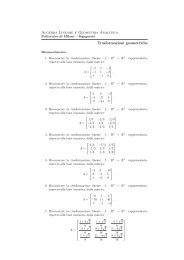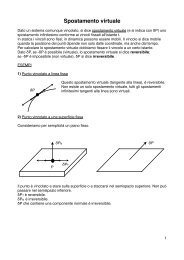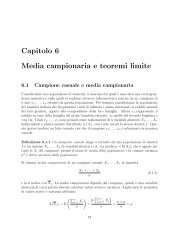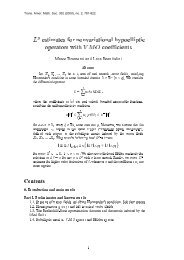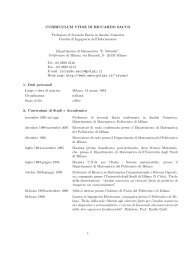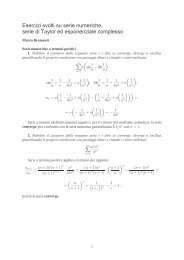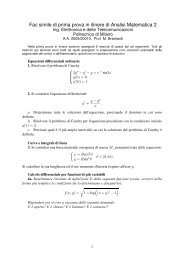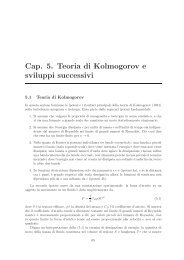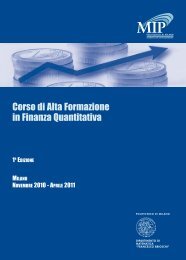Sul metodo degli elementi finiti applicato a problemi di elasticitàpiana
Sul metodo degli elementi finiti applicato a problemi di elasticitàpiana
Sul metodo degli elementi finiti applicato a problemi di elasticitàpiana
Create successful ePaper yourself
Turn your PDF publications into a flip-book with our unique Google optimized e-Paper software.
_<br />
S¥ <br />
_<br />
#¥ # <br />
Zba<br />
Z<br />
7S<br />
Z<br />
# `<br />
¨<br />
<br />
d<br />
c<br />
d<br />
c<br />
Z<br />
M! S <br />
!<br />
¨ <br />
`<br />
S¥ <br />
_<br />
<br />
&('<br />
¨<br />
<br />
#¥ # <br />
_<br />
$# <br />
&('<br />
¨<br />
`<br />
<br />
©H! S <br />
!<br />
"<br />
^<br />
7<br />
<br />
) GIJLK<br />
#<br />
&(- ?<br />
*+<br />
IJLK &(' ¥<br />
S<br />
Z<br />
MECH.1 – p.<br />
Esistenza e unicità della soluzione del pb. elastico<br />
Il problema debole (7) è della forma astratta:<br />
cercare tale che<br />
Z ¥(8)<br />
dove<br />
è la forma bilineare<br />
mentre<br />
è il funzionale lineare e continuo<br />
Per <strong>di</strong>mostrare l’esistenza e l’unicità della soluzione <strong>di</strong> (8) è necessario<br />
verificare che la forma bilineare sia coerciva sullo spazio . Ciò è<br />
possibile grazie ad un’importante proprietà, detta <strong>di</strong>suguaglianza <strong>di</strong> Korn.




